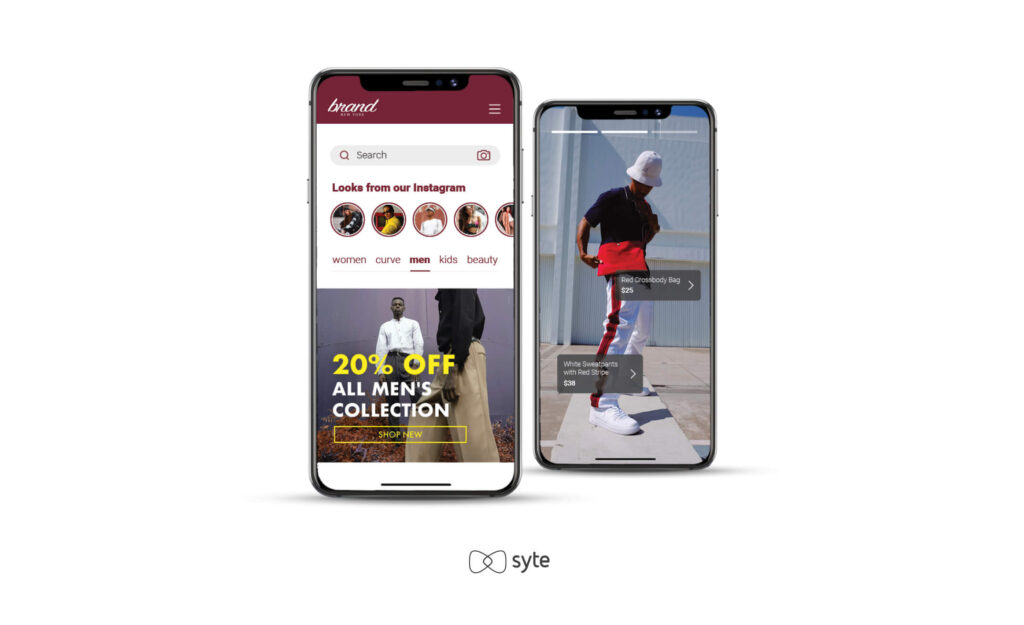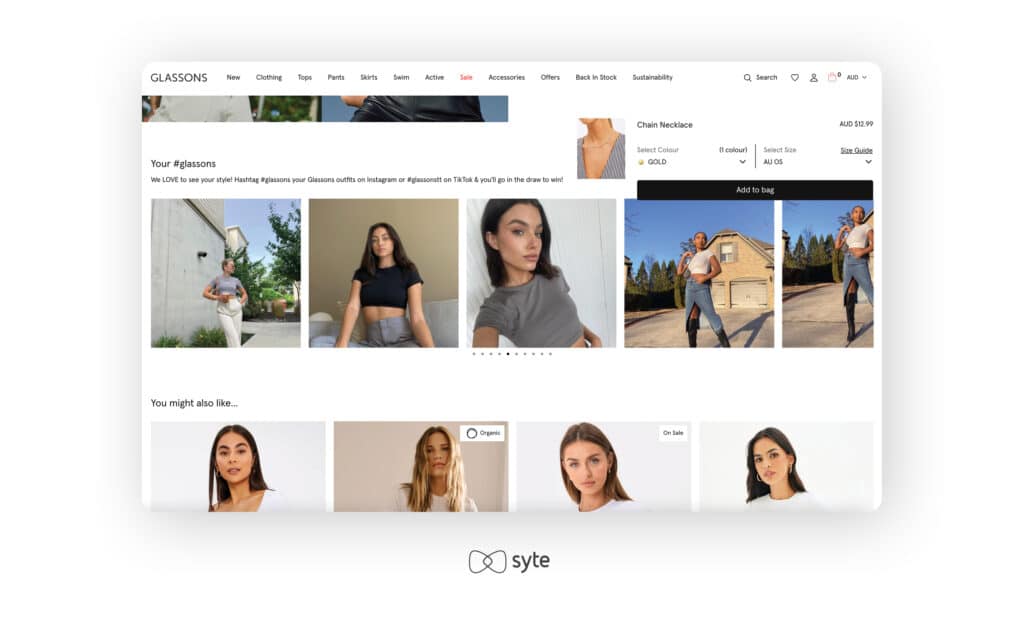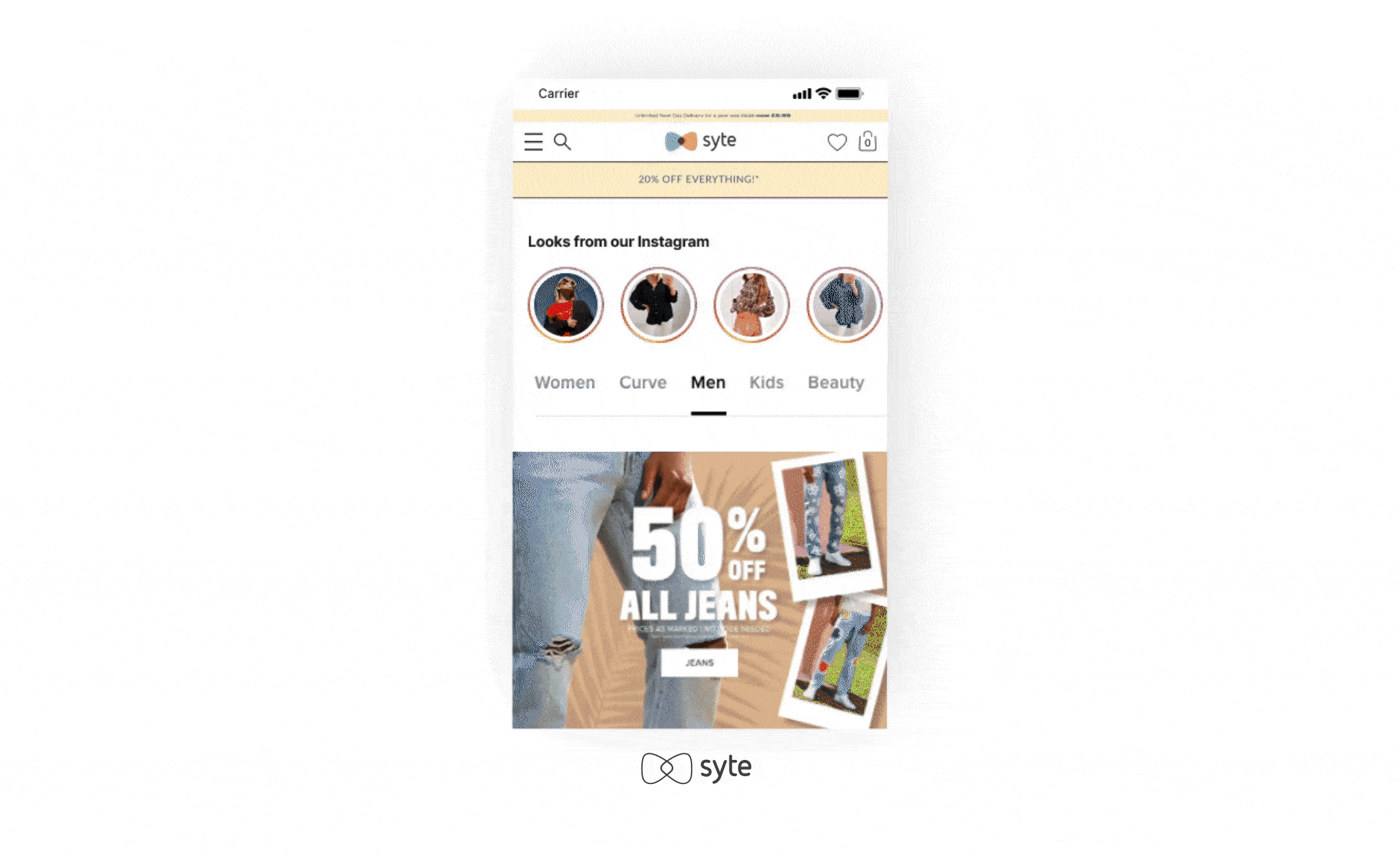Did you know that the typical social media user spends about 15% of their waking life on a social platform? According to a recent survey from RetailMeNot, social media is influencing how consumers shop in big ways. Of those surveyed, 54% indicated that social shopping enables them to find new products, and 39% report that it helps them track down better product details. By 2026, the global value of social commerce is forecast to reach $2.9 trillion.
According to research from Syte’s “The State of eCommerce Discovery in 2022” report, browsing and shopping on mobile are on the rise across the fashion, jewelry, and home decor verticals, although spending remains higher on desktop. This presents an opportunity for brands and retailers to ensure mobile shoppers can easily navigate from page to page, find all the items they’re interested in, and check out in a trusted environment.
But unlike eCommerce websites that have an 86% drop-off rate on mobile, social commerce is designed to be seamlessly embedded within the experience of scrolling through news feeds and “tapping” to view more details. This is why social media channels like Instagram, Twitter, and TikTok are increasingly adopting new shopping models directly on their platforms and opening up social commerce to the masses.

Democratizing Social Commerce
Social commerce, once reserved for businesses and verified accounts, is now being democratized from the likes of social media platforms including Instagram. The social media giant is enabling all users to share direct links to products and brands in their uploads.
As Instagram explains: “Scored a new pair of earrings from a small business you love? Tag the product in your Feed post so your friends and followers can learn more about the earnings and shop them! People come to Instagram to share and discover trends and inspiration. Product tagging will make it possible for anyone to support their favorite small businesses, share how they styled their looks along with the products they used, and more.”
With over 1.6 million users tagging products on a daily basis, opening up product tagging to the masses was a natural progression, seen as a win-win for users, brands, and Instagram alike. As more users adopt this highly sought-after feature, Instagram hopes to fuel a product discovery mindset to maximize the eCommerce use case and increase transactions. With larger numbers of users shuffling through Stories and Reels, this new product tagging push is expected to keep shoppers hooked with more time spent on the social media platform.
Inspiring Shopping Discovery
Other social platforms are testing the social commerce waters to stay up to speed. Twitter is currently trialing Product Display Cards within tweets as part of a broader shopping rollout. The update is expected to help brands with highlighting new products. The product cards direct users to either visit the product listing page (PLP) on a retailer’s website or head to the Shop on Twitter. The update, in combination with Twitter’s ad tools, is expected to inspire more shopping discovery and reframe habitual consumer behavior in the app.

The Epicenter of Content and Commerce
TikTok’s Shopify integration is also a play at the growing intersection of content, community, and commerce. The eCommerce partnership is a first for TikTok and is slated to boost organic product discovery for users and deepen the relationship of creators and merchants with consumers.
“Our community has transformed shopping into an experience that’s rooted in discovery, connection, and entertainment, creating unparalleled opportunities for brands to capture consumers’ attention,” said Blake Chandlee, President of Global Business Solutions at TikTok. “TikTok is uniquely placed at the center of content and commerce, and these new solutions make it even easier for businesses of all sizes to create engaging content that drives consumers directly to the digital point of purchase.”
The Rise of User-Generated Content
Social shopping certainly doesn’t begin or end on social media platforms but is increasingly being integrated into eCommerce websites in the form of user-generated content (UGC). It comes with a slew of benefits for brands, retailers, and consumers — from scaling back on marketing campaign spending by leveraging community content to offering up inspiration for shoppers as seen on real people.
More and more visual AI-powered tools like Shop Social are amplifying the social commerce experience on platforms like Instagram and TikTok in online shops. This technology inspires shoppers to find products they love using authentic content from other followers. It transforms entire looks into shoppable opportunities, enables mobile browsers to tap through engaging, shoppable ideas, similar to social media stories, and increases ROI from influencer marketing spend.
Getting shoppers to post content featuring your products is a great way to build engagement and brand loyalty. By dedicating real estate on your website and app to UGC, you can increase shopper engagement while building social proof. Plus, by showcasing social content on-site, you can get more mileage out of paid influencer campaigns.

Wrap-Up
As a meeting point of community, content, and commerce, social shopping is a way to share and discover new products, trends, and inspiration. For a cohesive omnichannel experience, brands and retailers should look beyond tagged products on social media platforms and integrate social shopping on their eCommerce websites for better conversion and ROI. Done right, social commerce is a win-win for users, brands, and social media platforms.